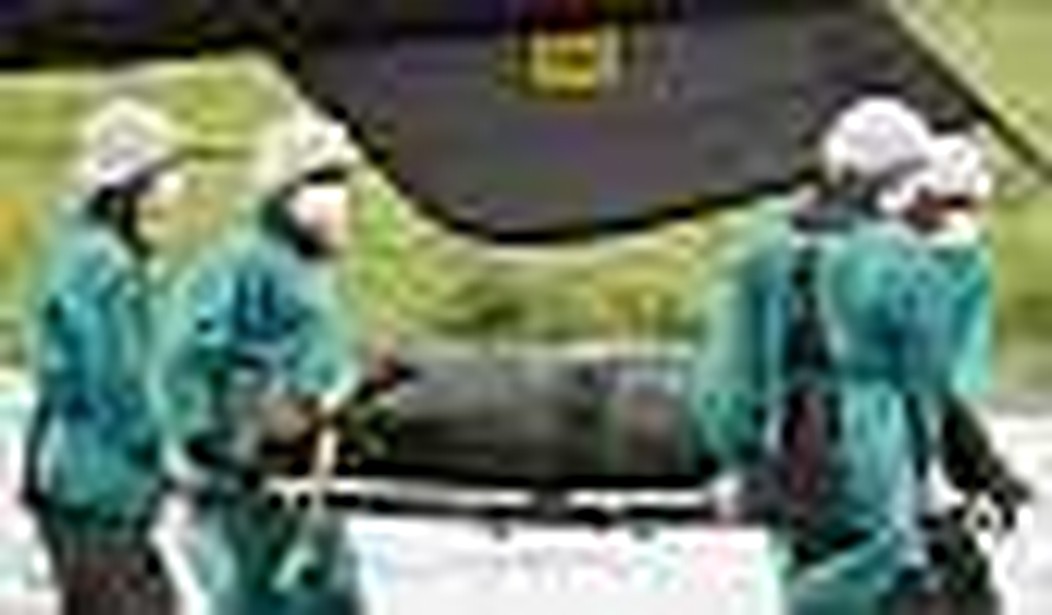On Wednesday morning, news emerged out of Paris that two Muslim men aboard Air France Flight 447, which crashed into the Atlantic Ocean on June 1, were Islamic radicals listed on France’s terrorist watch list.
French foreign intelligence agents from the DGSE (Direction Générale de la Sécurité Extérieure) released this information to the Paris weekly L’Express. Immediately, the story became headline news around the globe. And then, just hours later, those same French terrorism investigators recanted.
“No Terrorists in AF447,” read the second L’Express headline posted on Wednesday evening at 5:35 p.m. local time. Translated from the French, the flip-flop was explained as follows:
Failing to have the date of birth of passengers, it was impossible [for DGSE agents] to know if they were real terrorists or homonyms. Refining their “screening,” the investigators said, raised doubts. The theory of the accident, which killed 228 people, remains privileged.
Why did DGSE agents release potentially “doubtful” information ten days into an investigation when they could have waited only a few more hours to verify facts? Before this information was released, terrorism as a cause for the crash was at the bottom of most experts’ guess lists. Investigators had been focusing on mechanical failure, namely faulty speed sensors, as well as lighting strikes. Satellite photographs suggest that the aircraft flew into a violent storm. At first there was no crash site, which only enhanced the mystery. Then the site was found. Headway was being made. Why bring terrorism into the mix so late in the game, only to say excusez-moi, our mistake?
It is implausible to think that French investigators would release theoretical information before they checked the birth dates, unless they wanted that information in the public domain. The exclusive story was generated by agents from the DGSE, not by the French press. By raising inside suspicions of terrorism, French investigators have gained collaborative possibilities from agents abroad. If critical passenger information was not being shared with international agents before, that certainly is no longer the case. Now terrorism investigators from around the globe — from Interpol to DHS — are decoding the backstory of every passenger on that list with new eyes. French investigators wanted to make the story headline news. And they did.
Philippines Airlines Flight 434, a Boeing 747 which nearly crashed into the sea back in 1994, comes to mind. En route from Manila to Tokyo, a small explosion on board the aircraft ripped a hole in the side, killing a 24-year-old engineering student named Haruki Ikegami and nearly causing the airplane to crash. Luckily, there was an island with an emergency landing strip nearby. As author Simon Reeve explains in The New Jackals, it was the quick thinking captain and his “brute force” that was responsible for saving the lives of the passengers on board. As for how the mystery was solved, that involved international collaboration.
Japanese investigators initially believed the cause of the crash was firecrackers snuck onboard. The rationale behind that thin theory was that it was Christmastime and firecrackers are notoriously popular in Asia during that time of year. But a few days later, the Associated Press in Manila got an anonymous call from a man saying the terrorist organization Abu Sayyaf was responsible for the blast. Investigators around the globe were put on notice.
Months later, police investigators in Manila responding to an apartment fire unexpectedly discovered detailed drawings of what looked like a bomb’s timing device. Mindful of the unsolved Philippines Airlines crash, they faxed the drawings to the Japanese explosives expert assigned to the case. The drawings were the necessary missing piece of the puzzle, which in turn solved the crime. The apartment belonged to Ramzi Yousef, one of the FBI’s most wanted terrorists and the mastermind behind the 1993 World Trade Center terrorist attack.
On the Philippine Airlines passenger list, Yousef had used the pseudonym Armaldo Forlani; he didn’t use a “homonym” or even his real name. But he had personally carried the bomb on the airplane, armed it, and hid it under a seat. He wasn’t on the plane when it almost crashed; he’d deplaned on a scheduled stopover in Cebu. Had Japanese investigators neglected to seek international help in solving the case, the truth may never have emerged.
For now, the reason for the crash of Air France Flight 447 remains unsolved. But terrorism as a cause is no longer relegated to the bottom of the theoretical pile. In going on record with L’Express, agents from DGSE tipped the hand of the international community. Were terrorists on board? Time will tell. In the meantime, the French submarine Emeraude, with its state-of-the-art sonar equipment, is searching the bottom of the ocean floor for clues. So are others around the globe.









Join the conversation as a VIP Member